Understanding Banner Ads - A Comprehensive Guide
Search Ads connect you with near-purchase shoppers who are searching for products onsite and using the most popular search engines offsite
Buy CPC Traffic | Buy Display Ads | Exclusive traffic sources | Buy Push Ads | Popunder ADS | Buy Native Ads | Buy Preroll Ads

Buy CPC Traffic | Buy Display Ads | Exclusive traffic sources | Buy Push Ads | Popunder ADS | Buy Native Ads | Buy Preroll Ads
In the digital world, banner ads are a popular form of online advertising that can be found on various websites. They are graphical ads, usually rectangular in shape, that are displayed on a webpage and are designed to capture the attention of users. Banner ads often include text, images, and sometimes even animations to convey a marketing message.
One of the key purposes of banner ads is to drive traffic to a specific website or landing page. They are typically placed strategically on high-traffic websites to reach a wider audience and increase brand visibility. Banner ads can be targeted to specific demographics or displayed on websites that are related to the advertised product or service.
When users click on a banner ad, they are usually directed to the advertiser's website or a dedicated landing page. This is known as click-through rate (CTR), and it is an important metric that measures the effectiveness of a banner ad campaign. A high CTR indicates that the ad is successful in attracting users and generating interest in the advertised product or service.
Overall, banner ads are a valuable tool for businesses to promote their offerings and increase their online presence. They allow companies to reach a larger audience, generate leads, and ultimately drive sales. However, it is important for advertisers to create visually appealing and engaging banner ads that are relevant to their target audience in order to maximize their effectiveness.
Understanding the concept of banner advertising
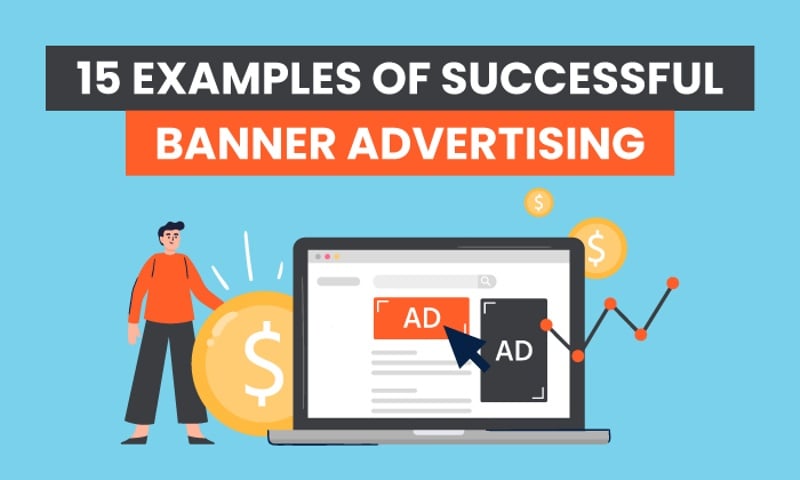
Banner advertising is a form of online marketing that involves the use of graphic images or multimedia elements displayed on websites in the form of a banner. These banners are typically rectangular in shape and are located in high-visibility areas of a webpage, such as at the top or along the sides.
The main purpose of banner advertising is to attract the attention of website visitors and encourage them to click on the banner. When a user clicks on a banner ad, they are typically redirected to the advertiser's website or a specific landing page. This can help drive traffic to the advertiser's site and potentially lead to conversions, such as a sale or a sign-up for a newsletter.
One of the key advantages of banner advertising is its ability to reach a wide audience. Banners can be displayed on a variety of websites that are relevant to the advertiser's target market, helping them to reach potential customers who may be interested in their products or services.
Banner ads can also be highly targeted, allowing advertisers to show their banners only to specific demographics or users with certain interests. This can help increase the effectiveness of the advertising campaign and improve the return on investment.
However, it is important for advertisers to carefully consider the design and placement of their banner ads. A poorly designed or irrelevant banner ad can be easily ignored or even considered annoying by website visitors, resulting in wasted advertising budget.
To ensure the success of a banner advertising campaign, advertisers should focus on creating visually appealing and engaging banners that are relevant to the target audience. They should also carefully select websites and placements that are likely to attract the right kind of traffic.
Overall, banner advertising can be an effective strategy for businesses looking to increase their online visibility, attract new customers, and drive conversions.
Benefits of using banner ads for online marketing
Banner ads are a popular form of online advertising that can be highly effective for businesses. Here are some of the key benefits of using banner ads for online marketing:
1. Increased brand visibility
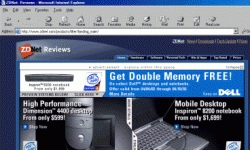
One of the main advantages of banner ads is that they help increase brand visibility. By strategically placing banner ads on relevant websites, businesses can expose their brand to a wider audience and increase brand recognition.
2. Targeted advertising

With banner ads, businesses have the ability to target specific audiences based on factors such as demographics, interests, and behavior. This allows businesses to reach the right people with their ads, increasing the chances of conversions and sales.
3. Cost-effective advertising
Compared to other forms of advertising, banner ads can be a cost-effective solution for businesses. They allow businesses to reach a large number of potential customers at a relatively low cost, making them a great option for businesses with limited advertising budgets.
4. Increased website traffic
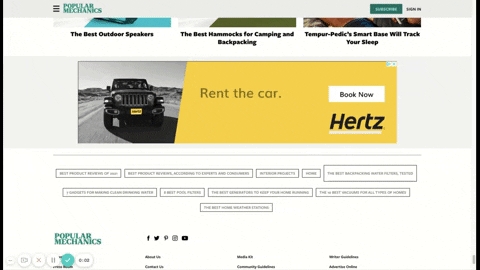
By placing banner ads on high-traffic websites, businesses can drive more traffic to their own website. This can result in increased brand awareness, higher search engine rankings, and ultimately, more leads and sales.
5. Flexibility and customization

Banner ads offer businesses a high degree of flexibility and customization. They can be easily modified and updated to reflect changes in the business or market, allowing businesses to stay relevant and adapt their advertising strategies as needed.
Overall, banner ads can be a valuable tool for businesses looking to promote their products or services online. To get started with banner ad marketing, businesses can buy display ads from reputable advertising platforms.
The different types of banner ads

There are several different types of banner ads, each with its own unique format and purpose. Here are some of the most common types:
Static banners: These are the most basic type of banner ads, consisting of a single image or graphic. They typically display a company logo or promotional message and are not interactive.
Animated banners: These banners include motion or animation effects to catch the viewer's attention. They can feature moving images, text, or other elements, and are often used to convey a dynamic or energetic message.
Interactive banners: These banners allow users to engage with the ad by clicking or interacting with certain elements. They can include interactive games, quizzes, or surveys, and are designed to increase user engagement and interaction.
Expandable banners: These banners start out as a standard-sized ad but expand in size when clicked or hovered over. They often contain more content or information than a static or animated banner and can provide a more immersive ad experience.
Video banners: These banners incorporate video content, such as short video clips or animations, to capture the viewer's attention. They are highly engaging and can effectively convey a message or story through audiovisual elements.
Rich media banners: These banners use advanced technologies and features to create an interactive and visually stunning ad experience. They can include elements like 360-degree product views, interactive maps, and social media feeds to provide an immersive and personalized ad experience.
Each type of banner ad has its own strengths and weaknesses, and the choice of which type to use depends on the campaign goals, target audience, and available resources. A well-designed and strategically placed banner ad can be a powerful tool for promoting a brand or product and driving user engagement and conversions.
How banner ads are created and designed

Banner ads are one of the most common forms of online advertising. They appear as rectangular graphics or images on websites and are designed to promote a product or service. Creating and designing effective banner ads involves a combination of strategic planning and creative design.
1. Identifying the target audience: Before creating a banner ad, it is important to identify the target audience. This helps in determining the design elements and messaging that will resonate with the intended viewers.
2. Setting goals and objectives: Once the target audience is identified, the next step is to set specific goals and objectives for the banner ad campaign. This could include increasing website traffic, generating leads, or driving sales.
3. Designing the layout: The layout of a banner ad should be visually appealing and attention-grabbing. It should include a headline, a call-to-action, and relevant imagery. The layout should be optimized for different screen sizes and resolutions.
4. Choosing the right colors and fonts: Colors and fonts play a crucial role in the design of banner ads. They should be chosen carefully to create a visually appealing and consistent brand image. The colors and fonts should also align with the overall branding guidelines.
5. Including a strong call-to-action: A call-to-action is a statement that prompts viewers to take a specific action, such as clicking on the ad or making a purchase. It should be clear, concise, and compelling.
6. Optimizing for performance: Banner ads need to be optimized for performance to ensure they load quickly and effectively on different devices. This includes optimizing file sizes, using appropriate image formats, and adhering to industry standards for ad performance.
7. Testing and iterating: A crucial part of designing banner ads is testing different variations and iterating based on the results. This involves A/B testing, analyzing metrics, and making data-driven decisions to optimize the performance and effectiveness of the ads.
In conclusion, creating and designing banner ads requires a combination of strategic planning, creative design, and performance optimization. By understanding the target audience, setting goals, and following design best practices, advertisers can create impactful and successful banner ad campaigns.
Choosing the right placement for your banner ads
When it comes to banner ads, placement is key. Finding the right placement for your ads can significantly impact their visibility and performance. Here are some factors to consider when choosing the placement for your banner ads:
Relevant websites: It's important to choose websites that are relevant to your target audience. Placing your banner ads on websites that attract your ideal customers can increase the chances of driving relevant traffic to your website.
High-traffic pages: Look for high-traffic pages within the websites you are considering. Placing your banner ads on these pages can ensure maximum exposure and reach a larger audience.
Position on the page: Consider where on the page your banner ads will be displayed. Placing them in prominent positions such as above the fold, near the content, or in the sidebar can improve their visibility and click-through rate.
Mobile optimization: With the increasing use of mobile devices, it's crucial to ensure that your banner ads are mobile-friendly. Choose placements that are optimized for mobile to reach users who are browsing on their smartphones or tablets.
Ad format: Different websites support various ad formats. Consider the types of banner ads that perform well on each website and choose the most suitable ad format for your campaign.
By carefully selecting the placement for your banner ads, you can increase their effectiveness and maximize your advertising efforts. If you are looking to buy display ads, make sure to keep these factors in mind to optimize your return on investment.
Effective strategies for a successful banner ad campaign
Running a successful banner ad campaign can be a challenging task. With numerous ads competing for attention, it is essential to implement effective strategies to ensure that your banner ads stand out and generate the desired results. Here are some strategies to consider:
Create compelling visuals:
Use eye-catching images, colors, and typography to grab the viewer's attention. A visually appealing banner ad is more likely to capture the user's interest and encourage them to click.
Optimize for mobile:
Make sure your banner ad is responsive and mobile-friendly, as a significant percentage of internet users access the web through their mobile devices. Test your ad on different screen sizes to ensure it looks great on all devices.
Target the right audience:
Identify your target audience and tailor your banner ad accordingly. Research their demographics, interests, and online behavior to create personalized ads that resonate with them.
Use concise and compelling copy:
Keep your ad copy clear, concise, and persuasive. Use compelling language to communicate the value proposition and benefits of your product or service. Avoid using jargon or complicated terms that could confuse or deter the viewer.
Include a clear call-to-action (CTA):
Your banner ad should have a clear and compelling CTA that prompts the viewer to take action. Whether it's "Buy Now," "Sign Up," or "Learn More," a well-placed and visually distinct CTA can significantly improve your click-through rate.
Monitor and optimize:
Continuously monitor the performance of your banner ad campaign and make adjustments as needed. Analyze metrics such as click-through rates, conversions, and engagement to identify areas for improvement and optimize your ads for better results.
Implementing these strategies can help maximize the effectiveness of your banner ads and increase the chances of a successful campaign. Remember to test and iterate to find the best combination of visuals, targeting, and messaging for your specific audience.
Measuring the Performance and Effectiveness of Banner Ads
Measuring the performance and effectiveness of banner ads is crucial for advertisers to determine the success of their campaigns and make informed decisions for future advertising strategies. There are several key metrics that can be used to assess the performance of banner ads:
Click-Through Rate (CTR)
The click-through rate is one of the most common metrics used to measure the effectiveness of banner ads. It represents the percentage of users who click on the ad after seeing it. A high click-through rate indicates that the ad successfully captured users' attention and generated interest.
Conversion Rate
The conversion rate measures the percentage of users who completed a desired action, such as making a purchase or filling out a form, after clicking on the ad. A high conversion rate indicates that the ad not only attracted users but also persuaded them to take the desired action.
Engagement Metrics
Engagement metrics, such as time spent on the website or the number of pages viewed, can provide insights into the effectiveness of banner ads. These metrics help determine if users found the ad interesting enough to explore further on the advertiser's website.
Return on Investment (ROI)
ROI is a crucial metric for advertisers, as it measures the profitability of their advertising campaigns. It considers the cost of the ad campaign and compares it to the generated revenue or other defined objectives. A positive ROI indicates a successful ad campaign, while a negative ROI suggests the need for adjustment or optimization.
In conclusion, measuring the performance and effectiveness of banner ads is essential for advertisers to evaluate the success of their campaigns. By analyzing metrics such as the click-through rate, conversion rate, engagement metrics, and ROI, advertisers can make data-driven decisions to optimize their future advertising strategies.
Common mistakes to avoid when using banner ads
Banner ads can be a powerful tool for promoting your business or products online, but there are some common mistakes that you should avoid to maximize their effectiveness. Here are some key mistakes to watch out for:
1. Poor design and visual appeal
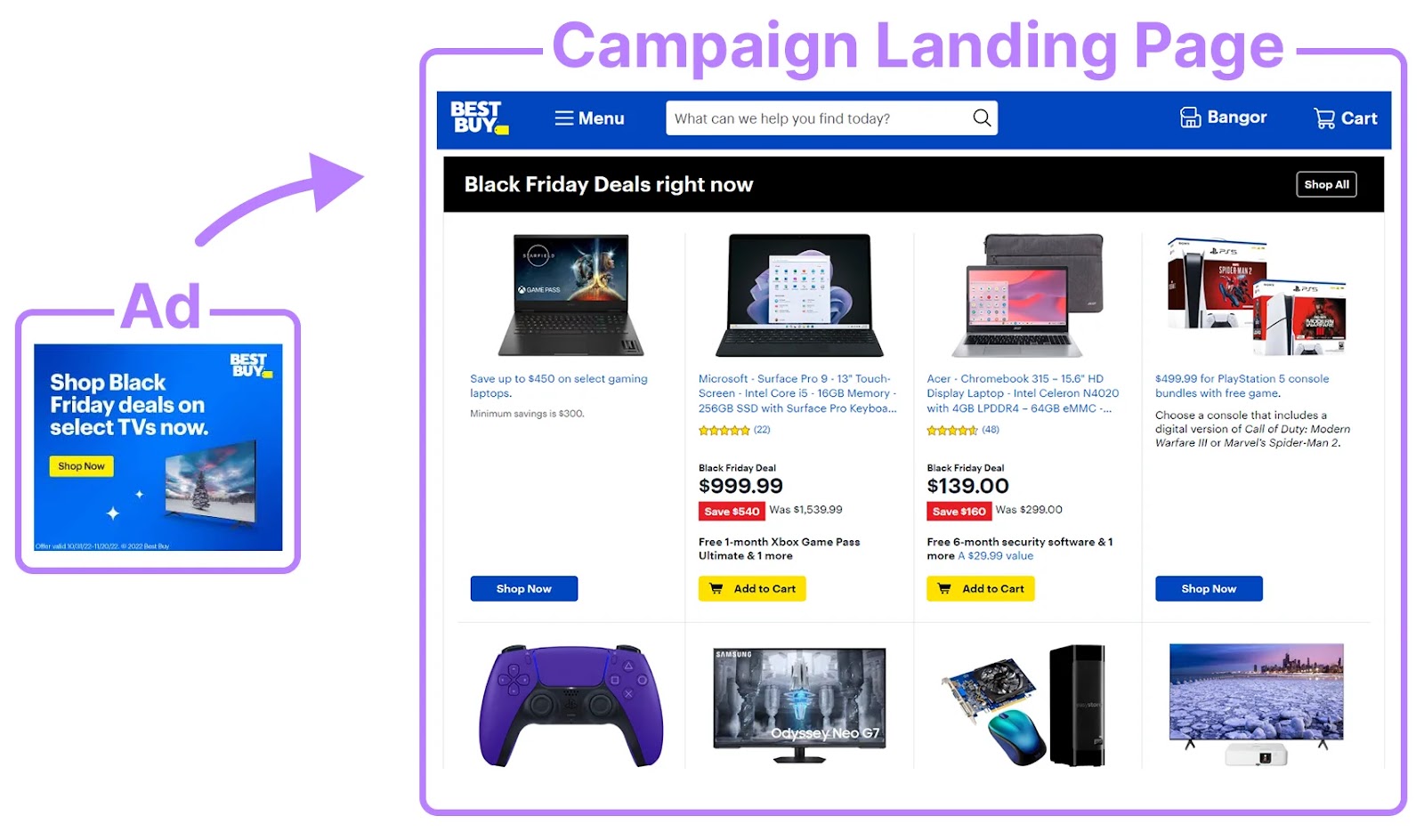
One of the biggest mistakes when creating banner ads is neglecting the design aspect. It's crucial to create visually appealing ads that catch the viewer's attention. Avoid using too many colors, cluttered layouts, or small and unreadable fonts. Make sure the design is clean, visually pleasing, and aligns with your brand identity.
2. Lack of a strong call-to-action
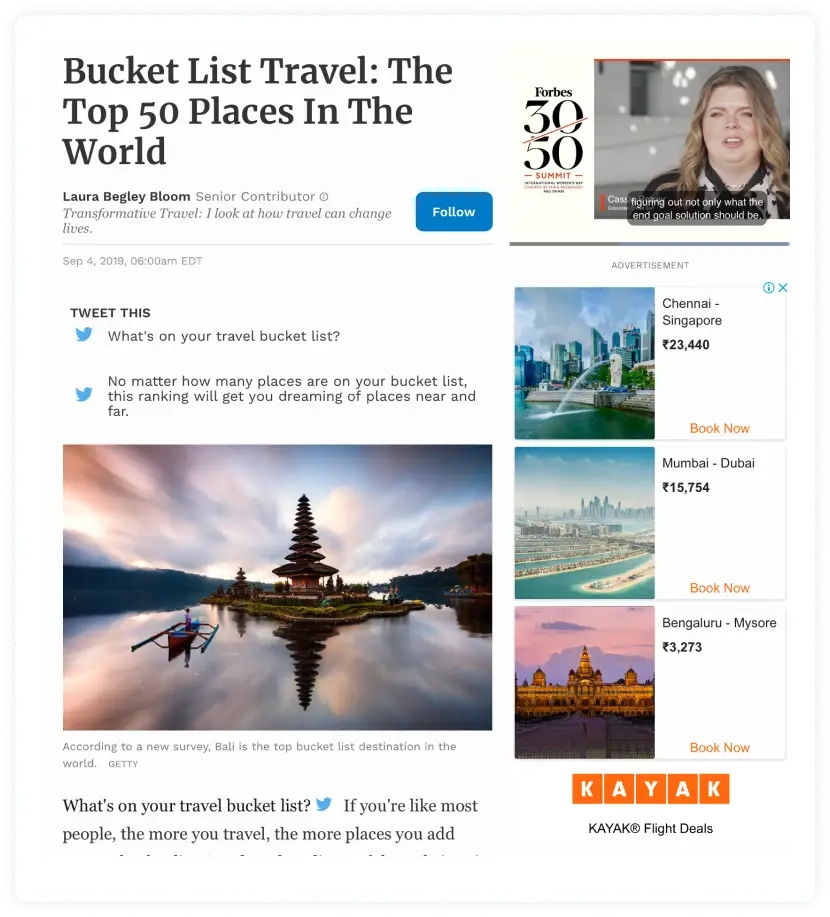
A common mistake is not including a clear and compelling call-to-action (CTA) in your banner ad. The CTA is what motivates users to click on the ad and take the desired action, whether it's making a purchase, signing up for a newsletter, or visiting a website. Make your CTA prominent, concise, and enticing to increase the click-through rate.
3. Irrelevant targeting and placement
Another mistake is displaying banner ads to the wrong audience or placing them on irrelevant websites. Understanding your target audience and their online behavior is crucial for effective banner ad campaigns. Ensure that your ads are shown to the right people at the right time and in the right places. Use demographic and interest-based targeting, as well as contextual targeting, to reach the most relevant audience.
4. Ignoring mobile optimization

In today's mobile-centric world, neglecting to optimize your banner ads for mobile devices is a major mistake. Ensure that your ads are responsive and display correctly on various screen sizes. Use mobile-friendly ad formats and sizes to reach users on smartphones and tablets. Ignoring mobile optimization can lead to a poor user experience and low conversion rates.
5. Overusing animation and effects
While animation and effects can make your banner ads more eye-catching, overusing them can have a negative impact. Excessive animation or flashy effects can distract the viewer and take away from the main message of the ad. Use animation sparingly and make sure it enhances the overall ad experience without overwhelming the viewer.
Avoiding these common mistakes when using banner ads can significantly improve their performance and increase your chances of achieving your advertising goals. Remember to continually monitor and optimize your campaigns to ensure ongoing success.
Future trends and developments in banner advertising
As technology continues to advance and consumer behavior evolves, banner advertising is also expected to undergo significant changes in the future. Here are some of the future trends and developments that are likely to shape the landscape of banner advertising:
Personalization: With the increasing amount of data available, advertisers will be able to deliver more targeted and personalized banner ads to individual users. This will result in higher engagement and conversion rates as the ads will be more relevant to the interests and preferences of the users.
Dynamic content: Banner ads will become more interactive and engaging with the inclusion of dynamic content such as videos, animations, and interactive elements. This will help to capture the attention of users and keep them engaged with the ad.
Mobile optimization: As the use of mobile devices continues to rise, banner ads will need to be optimized for mobile screens. Responsive design and mobile-specific ad formats will become more important to ensure that the ads are displayed effectively on smaller screens.
Native advertising: Banner ads will be seamlessly integrated into the content of websites and apps, making them appear more natural and less intrusive. This form of advertising is expected to be more effective in capturing the attention of users and driving desired actions.
Artificial intelligence: AI technologies will play a larger role in banner advertising, helping to optimize ad targeting, delivery, and placement. AI-powered algorithms will be able to analyze user data in real-time to deliver the most relevant ads at the right time and in the right context.
Interactive storytelling: Banner ads will move beyond static images and text to tell interactive stories that engage users and evoke emotions. This will create a more immersive and memorable ad experience for users.
Data privacy and regulations: With increasing concerns around data privacy, there will be more regulations and standards in place to protect user data. Advertisers will need to adhere to these regulations and ensure that user data is collected and used in a transparent and responsible manner.
In conclusion, banner advertising is expected to evolve in the future with the advent of personalization, dynamic content, mobile optimization, native advertising, AI technologies, interactive storytelling, and data privacy regulations. These developments will help to create more effective and engaging banner ads that deliver better results for advertisers.
What are banner ads?
Banner ads are online advertisements that appear on websites in the form of graphics or images. They are usually placed at the top, bottom, or sides of a webpage.
How do banner ads work?
Banner ads work by promoting a product or service through an eye-catching visual display. When a user clicks on a banner ad, they are typically redirected to the advertiser's website or a specific landing page.
What is the purpose of banner ads?
The purpose of banner ads is to attract the attention of potential customers and drive traffic to a website. They are often used by businesses to increase brand awareness, generate leads, and increase sales.
Are banner ads effective for advertising?
Yes, banner ads can be effective for advertising when they are well-designed and targeted to the right audience. However, their effectiveness can vary depending on factors such as placement, design, and relevancy to the target audience.
How are banner ads different from other types of online ads?
Banner ads differ from other types of online ads, such as text ads or video ads, in that they are visual in nature and typically placed within the content of a webpage. They can be static or animated and often include a call-to-action.
What are banner ads?
Banner ads are a form of online advertising that are displayed on websites in the form of rectangular or square banners. They usually contain images, text, and sometimes animation or videos.
How do banner ads work?
When a user visits a website that displays banner ads, the ad is loaded from the advertiser's server and displayed on the webpage. When the user clicks on the banner ad, they are directed to the advertiser's website or landing page.
Are banner ads effective?
The effectiveness of banner ads varies depending on factors like the design, placement, and targeting. Some studies have shown that banner ads can be effective in increasing brand awareness and driving website visits, while others argue that their impact is limited due to banner blindness and ad-blocking software.
How can I create a banner ad?
To create a banner ad, you can use graphic design software like Photoshop or Canva to design the visuals and add text. Once you have the design ready, you can use online banner ad creation tools or consult with a web developer to turn your design into a clickable ad that can be displayed on websites.
What are the common sizes for banner ads?
There are several standard sizes for banner ads, including leaderboard (728x90 pixels), medium rectangle (300x250 pixels), wide skyscraper (160x600 pixels), and mobile leaderboard (320x50 pixels). However, the sizes can vary depending on the specific website or platform where the ads will be displayed.
Buy CPC Traffic | Buy Display Ads | Exclusive traffic sources | Buy Push Ads | Popunder ADS | Buy Native Ads | Buy Preroll Ads
2022-2024 @ What are banner ads
Last updated